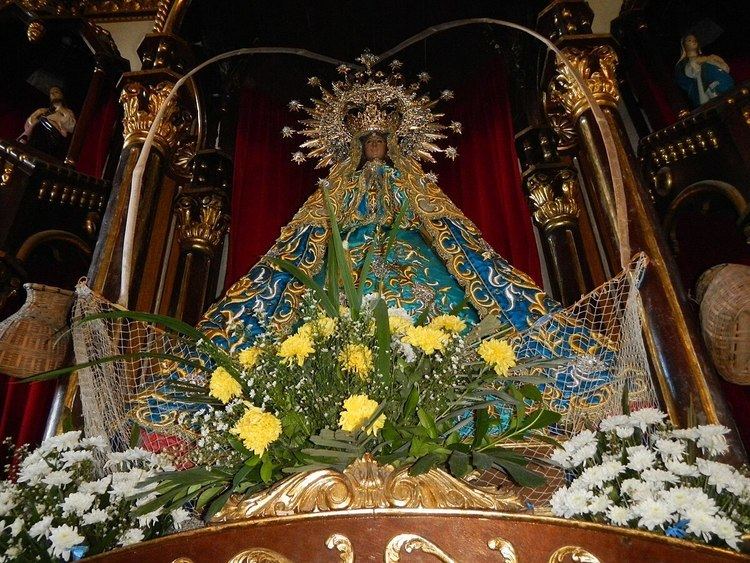Date 19 June 1763 | Type Finding of the image | |
 | ||
Witness Juan, Julián, and Diego dela Cruz | ||
Our Lady of Salambáo (Spanish: Nuestra Señora dela Inmaculada Concepción de Salambáo; Tagalog: Mahal na Birhen ng Salambáw) is a Catholic title of the Blessed Virgin Mary venerated in Obando, Bulacan, on Luzon Island (Baranggay Binuangan) in the Philippines. The Virgin Mary under this title is venerated as the local patroness of fishing, owing to the image's discovery in a salambáw (a type of fishing net).
Contents
The image is enshrined with Saint Clare of Assisi and Saint Paschal Baylon inside Obando Church. The three saints form a triad that is the focus of the annual Obando Fertility Rites held from 17–19 May.
Legend
The date of the image's finding is traditionally held to be 19 June 1763. Three fishermen, named Juan, Julián, and Diego dela Cruz, were fishing at a place known as Hulingduong, Binuangan in Obando, Bulacan. There, they caught the statue with their salambáw, which is a type of lift net made from bamboo crosspieces and mounted on a raft. When the fishermen intended to bring the Virgin's image to neighbouring Navotas, their boat suddenly grew heavy and immobile. They decided to head for Obando, and their craft suddenly lightened and became easy to paddle. This they took to be a sign that the Virgin wanted to be enshrined in Obando.
The image—complete with a replica salambáw—is now housed in a wooden retablo (reredos) above the high altar of San Pascual Baylon Parish, together with statues of Saint Clare and Saint Paschal. A replica of the statue, in its own salambáw, is used for the annual procession on the third day of the Rites.
Feast
The feast of Our Lady of Salambáo is on 19 May, which is the last day of a triduum honouring the triad of saints. Spread across the triduum are the Rites, which constitute Masses and processions where devotees of both sexes joyfully dance the fandango in supplication for a spouse or child. The celebrations are centred on the San Pascual Baylon Parish Church, also known as the Diocesan Shrine of Nuestra Señora de la Inmaculada Concepción de Salambáo in Barangay Pag-asa, Obando, Bulacan.
